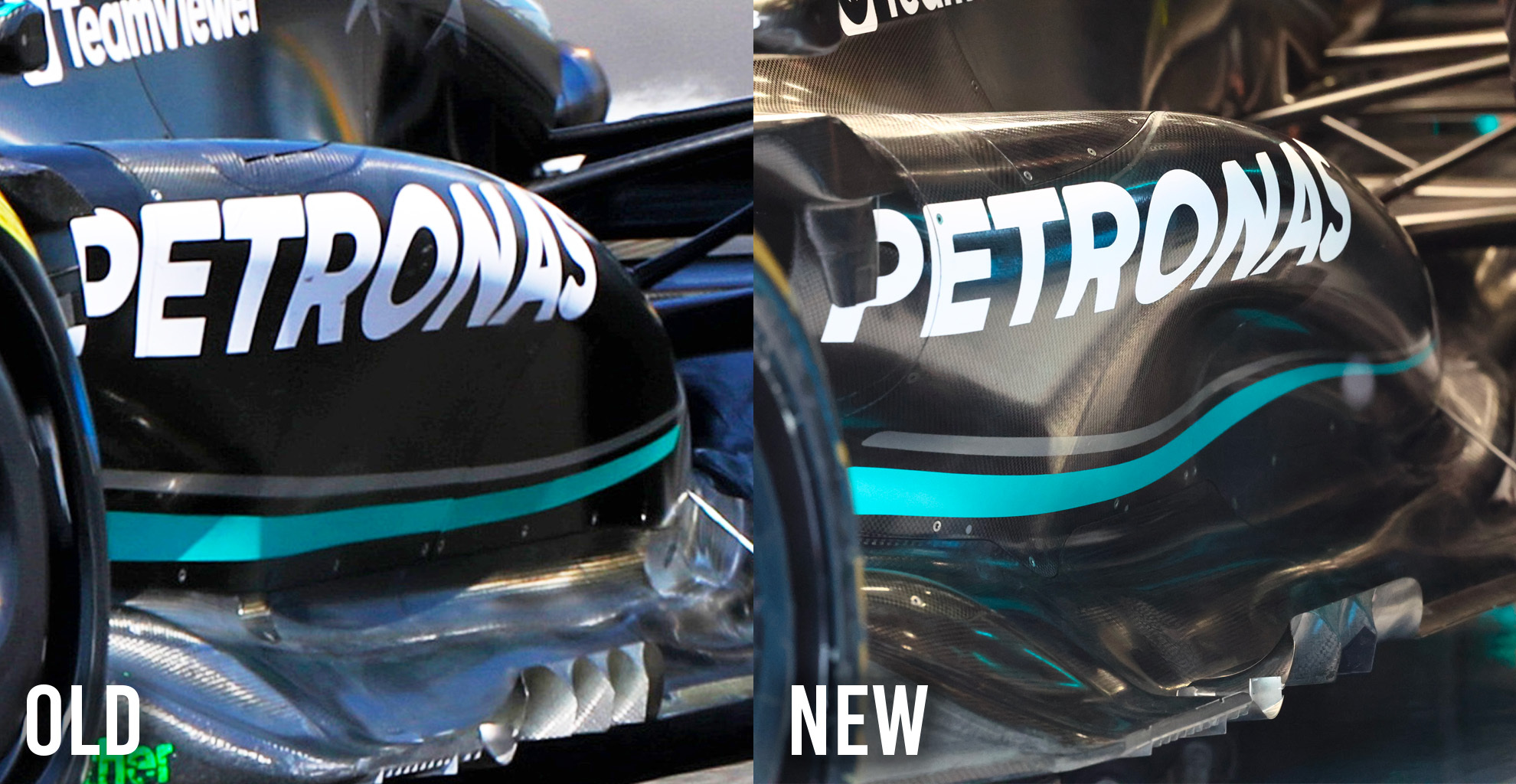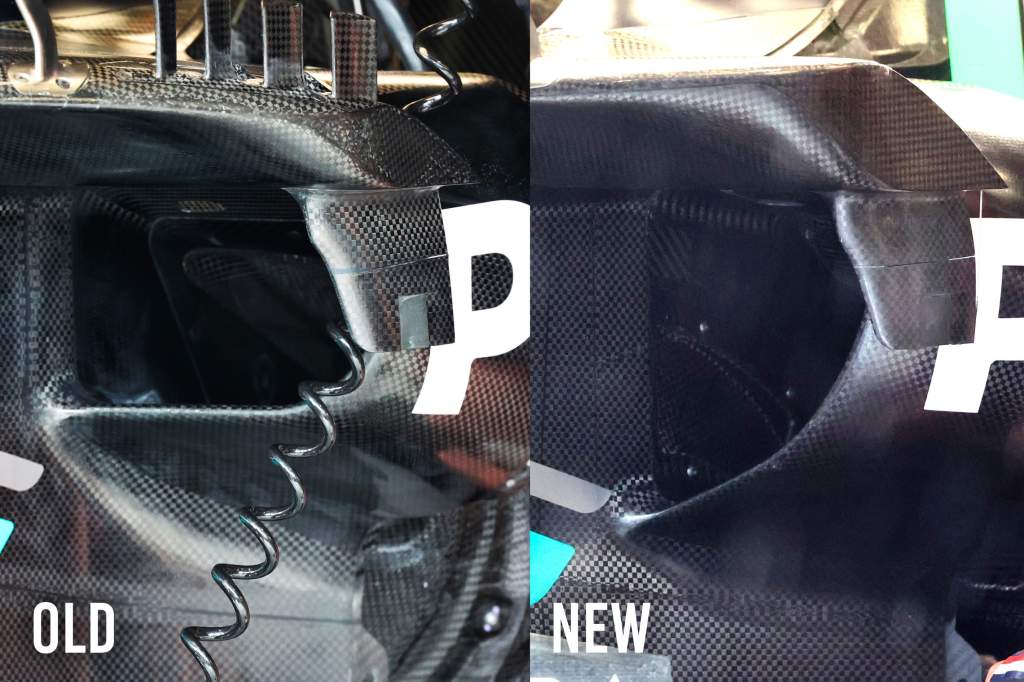Up Next

I must admit to being a bit surprised with the modifications Mercedes has brought to Spa for this weekend’s Belgian Grand Prix.
While Red Bull has been pushing its radiator inlet opening into the higher-up letterbox style that appeared last weekend in Hungary, Mercedes seems to have taken a step back towards the solution it had at the start of this year.
Mercedes stated that it had underestimated the cooling requirements in Hungary, but that was last week. At Spa, because of the fast nature of the track and the ambient conditions, minimum cooling is normally required.
These changes would not have been developed in the short time since Hungary – they would have obviously been in the pipeline beforehand. Perhaps they were intended for Hungary, but took too long to produce?
So let’s have a closer look at what Mercedes has arrived with and will presumably run in practice tomorrow.

The yellow highlight shows the ‘new’ inlet shape with the ‘old’ inlet shape in red. This is also transposed onto the new version to show the increased inlet opening and the shape comparison.
Relating it to Red Bull, which after all is the most consistent team so far under these new ground effect regulations, it’s the area marked with the green highlight that I would be concerned about.
As I have often said, it is when the cooling system starts to block off at high speed because the radiators just can’t flow as much mass airflow as is presented to them that you need to manage that spillage.
By having a shorter top on the radiator inlet duct, the Red Bull allows this spillage to be pulled over the top surface.

This minimises the change to the airflow in the sidepod leading edge undercut and Coke bottle, as well as how the vortices created at the ends of the underfloor leading edge splitters are set up.
With this Mercedes style of inlet, the upper forward impact structure is housed in that green highlighted area, meaning that any spillage will go into the sidepod undercut area (magenta arrows) and in doing so affect the performance of this area. This, in turn, will affect the performance of the underfloor.
This new solution might just be a touch better than the previous Mercedes version, but for me the change will be minimal.
Further rearward, Mercedes has also altered the body profile, creating a more pronounced ‘bump’ just below the ‘T’ and ‘R’ of Petronas.

This may be to house a different-style radiator in that area, or to act as more of a trip for the airflow coming around that leading edge undercut area.
However, I can’t really see a reason to think it is really for aerodynamic flow structure reasons.
In conjunction with the reprofiled radiator inlet and sidepod surface, it looks like Mercedes has also altered the geometry of the turning vanes on the outer floor edge.

These pictures are at slightly different angles, so it’s difficult to really see the changes in detail. However, it looks like there is now one fewer turning vane – as highlighted with the red ellipse.
Across the grid, we see quite dramatic changes in this area. The function of the vanes is to scavenge some of the flow that goes into the leading edge of the underfloor and help seal the underfloor floor further rearwards.
Small details can make big differences in how these turning vanes set up the vortices that achieve that, but going from three to two seems like a negative direction.




